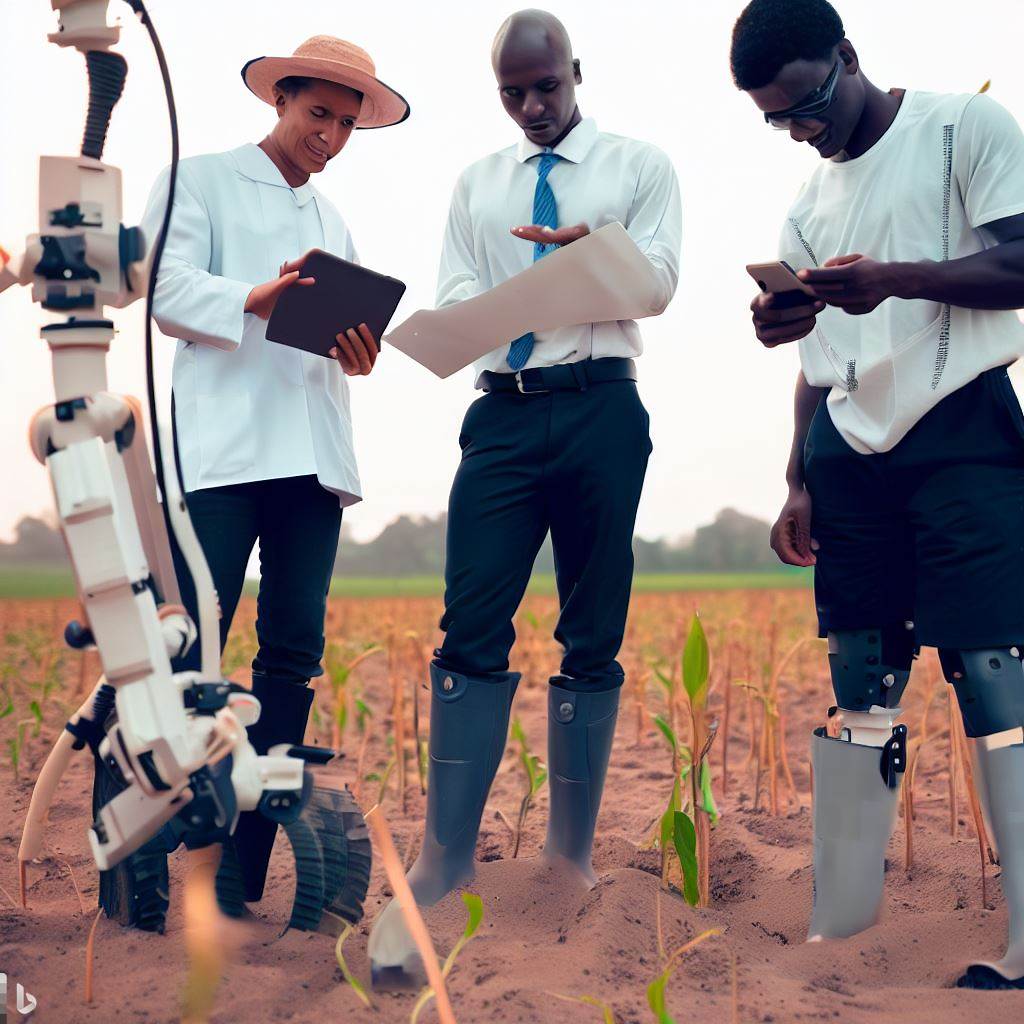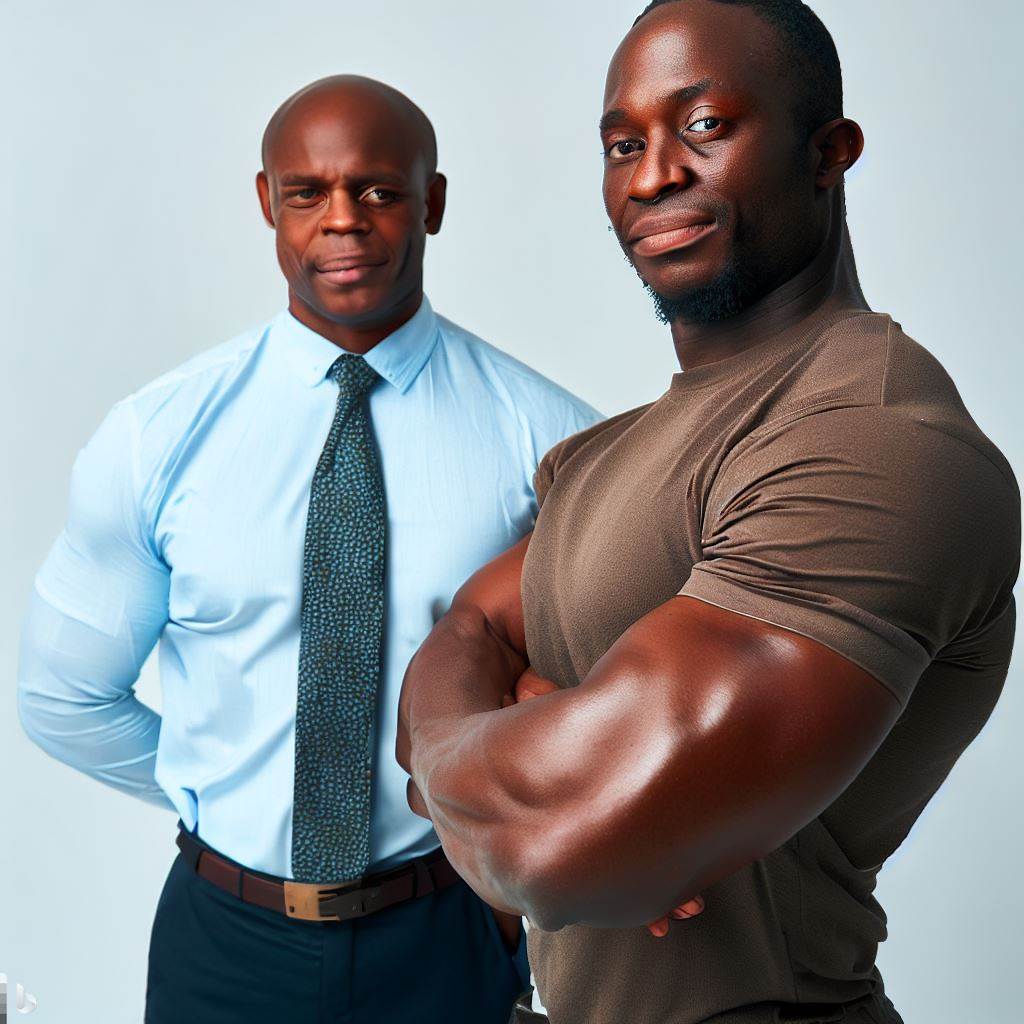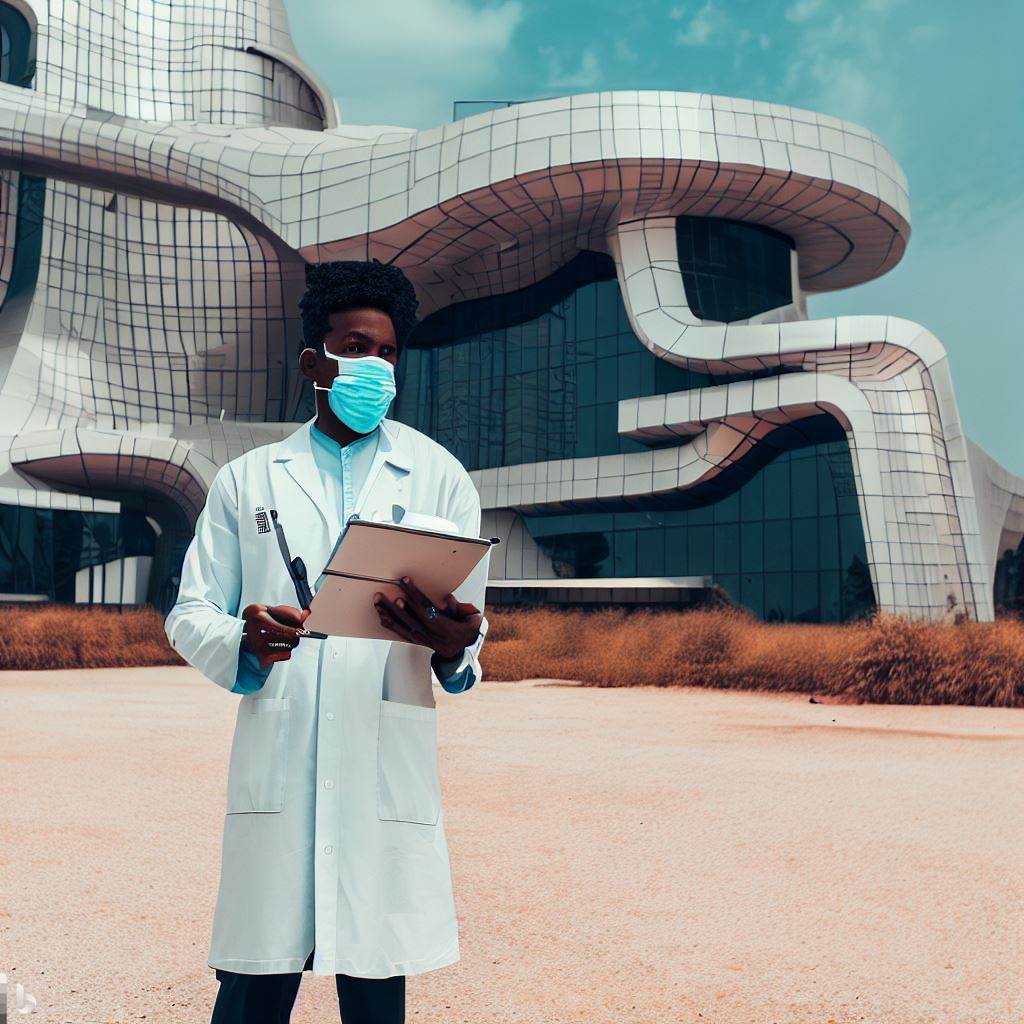Introduction
Technological innovations play a vital role in revolutionizing the design, fabrication, and utilization of prosthetics and orthotics in Nigeria’s O P field.
These advancements are crucial for improving patient care, enhancing mobility, and increasing independence.
In Nigeria’s orthotics and prosthetics field, technological innovations refer to the development and utilization of cutting-edge devices, equipment, and systems that enhance the diagnosis, treatment, and rehabilitation of individuals with limb loss and mobility impairments.
These innovations provide a wide range of benefits, including improved functionality, comfort, and overall quality of life for patients.
One cannot overstate the importance of technological innovations in Nigeria’s O P field. They have the potential to address several challenges faced by both healthcare providers and patients.
By incorporating advanced technologies, such as 3D printing, computer-aided design (CAD), and robotics, practitioners can create customized and precise prosthetic and orthotic devices, tailored to the specific needs and conditions of each patient.
Moreover, these innovations enable practitioners to streamline the production process, reduce costs, and shorten the delivery time for prosthetic and orthotic devices.
This is particularly significant in a country like Nigeria, where access to healthcare resources and limited financial means are major concerns.
Overall, technological innovations have the power to transform Nigeria’s O&P field by bringing advancements that enhance patient outcomes, increase access to care, and promote inclusivity.
In the following sections, we will explore specific technological innovations in Nigeria’s O&P field and their impact on improving patient care and advancing the field as a whole.
Overview of Nigeria’s O&P Field
Nigeria’s orthotics and prosthetics (O&P) field has a rich and fascinating history, deeply rooted in the country’s unique cultural context.
However, it also faces numerous challenges and limitations in its current state. Let’s delve into the details:
Brief History and Context
The first orthopedic clinic was established in Lagos in the early 1950s, marking the beginning of Nigeria’s O&P field.
Foreign missionaries played a vital role in introducing modern orthotics and prosthetics techniques to Nigeria during this period.
In the 1970s, the Nigerian government recognized the importance of O&P services and established training programs for local professionals.
In 1986, practitioners founded the Society of Nigerian Orthotists and Prosthetists (SNOP) to promote the development of the field and provide support and resources to its members.
Traditional practices, such as using wooden limbs, still coexist with modern approaches, highlighting the fusion of cultural and scientific influences.
Current Challenges and Limitations in the Field
- Limited access to quality O&P services remains a significant challenge, particularly in rural areas of Nigeria.
- Lack of awareness and education about orthotics and prosthetics among the general population often leads to a delay in seeking treatment.
- Insufficient funding and resources hinder the establishment of well-equipped O&P centers across the country.
- The scarcity of trained and certified professionals is a severe constraint, leaving a significant gap between the demand and supply of services.
- Technological advancements, such as computer-aided design and manufacturing (CAD/CAM), are not widely accessible or integrated into Nigeria’s O&P field.
- Importing specialized O&P equipment is costly and time-consuming due to bureaucratic procedures and import restrictions.
- Inadequate government support and policy frameworks further hinder the progress of the O&P field.
- Socio-cultural beliefs and stigmas surrounding disabilities present challenges in promoting inclusivity and acceptance of O&P interventions.
- The lack of standardized and regulated training programs for O&P professionals hampers the development and recognition of their expertise.
- Insufficient collaboration and knowledge-sharing among stakeholders limit innovation and hinder the overall growth of the O&P field.
Despite these challenges, there have been notable initiatives and innovations that signal hope for Nigeria’s O&P field:
- The establishment of mobile outreach programs to reach underserved areas and provide basic O&P services.
- Partnerships between international organizations and local institutions to train and certify more professionals.
- Efforts to raise public awareness and advocacy campaigns to eliminate misconceptions surrounding O&P interventions.
- Development of low-cost, locally-sourced materials for creating orthotics and prosthetics to overcome supply chain challenges.
- Integration of telemedicine and digital solutions to remotely assist patients and provide consultations in areas with limited resources.
In fact, Nigeria’s O&P field has come a long way since its inception, but there are still significant challenges to overcome.
Technological Innovations in Nigeria’s O P Field
3D Printing Technology
- 3D printing technology allows the creation of three-dimensional objects from a digital file.
- In the O&P field, 3D printing is used to create customized prosthetics and orthotics.
- Successful implementation of 3D printing in Nigeria includes cases where amputees received affordable and tailored prosthetic limbs.
Mobile Applications
- Mobile applications have revolutionized healthcare by providing access to medical information and improving communication.
- In Nigeria’s O&P field, specific mobile apps have been designed to assist practitioners and patients.
- These apps have improved patient care by enabling remote consultations, tracking treatment progress, and providing educational resources.
Artificial Intelligence (AI)
- Artificial Intelligence refers to the simulation of human intelligence in machines that are capable of performing tasks that require human intelligence.
- In Nigeria’s O&P field, AI-based solutions have been developed to improve diagnosis and treatment processes.
- AI algorithms can analyze patient data, assist in creating personalized treatment plans, and enhance the accuracy of prosthetic fittings.
Technological Innovations in O&P Field in Nigeria have led to remarkable advancements, benefiting patients with limb loss or physical disabilities.
3D printing allows practitioners to create affordable and customized prosthetics, ensuring a perfect fit and functionality.
Mobile apps facilitate remote consultations and provide educational resources, enhancing patient engagement and overall care.
Artificial Intelligence (AI) enables personalized treatment plans and accurate prosthetic fittings by analyzing patient data.
These innovations have transformed Nigeria’s O&P field, offering tailored solutions and improving the quality of life for individuals in need of prosthetics and orthotics.
Read: Challenges Faced by Orthotists and Prosthetists in Nigeria

Success stories of Technological Innovations in Nigeria’s O P Field
In recent years, there have been numerous success stories highlighting the impact of technological innovations in Nigeria’s Orthotics and Prosthetics (O P) field.
Both individuals and organizations have harnessed the power of technology to make a difference and improve the lives of patients and healthcare providers.
Let’s explore some inspiring examples:
- Nneka’s Story: Nneka, a young girl with a congenital limb difference, had limited access to prosthetic limbs due to financial constraints. However, thanks to the innovative use of 3D printing technology, a local organization was able to create a customized prosthetic arm at a fraction of the cost.
- Tech Startups Revolutionizing O&P: Nigeria has witnessed the rise of tech startups specializing in the O&P field. These startups leverage mobile applications and Artificial Intelligence (AI) to provide remote consultations, prosthetic design customization, and even virtual rehabilitation.
- Telemedicine Services for Prosthetic Maintenance: The lack of specialized healthcare providers in remote areas has been a persistent challenge in Nigeria. However, telemedicine initiatives have emerged to bridge this gap. Online platforms and mobile applications now enable patients to seek advice, troubleshooting, and maintenance support for their prosthetic devices from qualified professionals, regardless of their geographical location.
- Collaborative Research Projects: Collaborations between academic institutions, non-profit organizations, and healthcare providers have sparked breakthroughs in O&P technology. Nigeria’s O&P field has seen successful partnerships involving engineers, designers, and healthcare practitioners.
- Rehabilitation Gaming: With the increasing popularity of virtual reality (VR), gaming technology has found its way into the O&P field. Rehabilitation centers are now utilizing VR games and simulators to engage patients in their therapy sessions.
Impact on patients and healthcare providers
The impact of these technological innovations on patients and healthcare providers in Nigeria’s O&P field is significant:
- Improved Access: Technology has bridged the geographical divide and provided access to advanced O&P care for individuals in remote areas. This ensures that no patient is left behind and empowers them to lead more fulfilling lives.
- Cost-effective Solutions: Technological advancements have brought down the cost of O&P devices and services, making them more affordable and accessible to a broader population. This has substantially reduced the financial burden on patients and enhanced their quality of life.
- Enhanced Rehabilitation: The integration of wearable technology, electronic sensors, and VR gaming has redefined rehabilitation programs. Patients can now experience more interactive and engaging therapy sessions, leading to faster and more effective recovery.
- Empowering Healthcare Providers: Technology has equipped healthcare providers with tools for remote consultations, personalized monitoring, and real-time data analysis. These advancements enable them to deliver more accurate diagnoses, tailored treatment plans, and improved follow-up care.
In review, technological innovations in Nigeria’s O&P field have brought about transformative changes and success stories.
From 3D-printed prosthetics to telemedicine services, these innovations have improved accessibility, affordability, and the overall quality of care.
With further advancements and continued collaboration, the O&P field in Nigeria has a promising future, maximizing the potential of technology to make a lasting impact on patients and healthcare providers.
Read: Paramedic Certification in Nigeria: A Detailed Guide
Challenges and Limitations of Technological Innovations in Nigeria’s O P Field
In spite of the tremendous potential and recent advancements in technological innovations in Nigeria’s Orthotics and Prosthetics (O&P) field, there are several challenges and limitations that hinder their widespread adoption.
These challenges can be attributed to factors such as limited access to resources and infrastructure, financial constraints, and a lack of funding.
Factors Hindering Widespread Adoption
One major challenge faced by technological innovations in Nigeria’s O&P field is the limited acceptance and adoption by both patients and healthcare providers.
This is due to several factors, including a lack of awareness and understanding of the benefits and functioning of these technologies.
Moreover, there is also the issue of cultural beliefs and attitudes towards disability.
In some communities, individuals with physical disabilities are stigmatized and marginalized, which poses a challenge in encouraging the adoption and use of O&P devices.
Limited Access to Resources and Infrastructure
A significant challenge that hampers the adoption of technological innovations in Nigeria’s O&P field is the limited access to essential resources and infrastructure.
This includes factors such as inadequate healthcare facilities, scarcity of trained professionals, and limited availability of specialized materials and equipment.
Without the necessary resources and infrastructure, it becomes challenging to provide accessible and quality O&P services to individuals in need.
This further affects the adoption and effective utilization of technological innovations in the field.
Financial Constraints and Lack of Funding
Financial constraints and a lack of funding pose a significant limitation to the development and implementation of technological innovations in Nigeria’s O&P field.
The high costs associated with acquiring and maintaining these technologies make them inaccessible to many patients who require them.
Additionally, the lack of funding from government agencies or healthcare institutions makes it difficult for researchers, engineers, and innovators to carry out further research and development.
This limits the advancements in technological solutions and restricts their availability to individuals in need.
In summary, while technological innovations in Nigeria’s O&P field hold great promise in improving the quality of life for individuals with physical disabilities, there are significant challenges and limitations that hinder their widespread adoption.
Factors such as limited access to resources and infrastructure, financial constraints, and a lack of funding impede the progress in this field.
Efforts should be made to address these challenges by increasing awareness and education about the benefits of O&P technologies, improving access to essential resources and infrastructure, and providing adequate funding for research and development.
By overcoming these challenges, Nigeria can unlock the full potential of technological innovations in the O&P field and improve the lives of individuals with physical disabilities.
Read: Clinical Practices for Physical Therapy Assistants in Nigeria
Future Prospects and Recommendations
The future prospects for Nigeria’s Orthotists and Prosthetists (O P) field are promising, driven by potential technological advancements and opportunities for innovation.
Encouraging research and development within the industry will push technological boundaries and keep Nigeria at the forefront of progress.
Potential advancements and opportunities for further innovation
One area of exciting innovation is 3D printing technology, which can revolutionize prosthetic device production.
By using 3D printing, prosthetics can be customized quickly and cost-effectively, providing individuals with limb loss or impairment tailored solutions for enhanced comfort and functionality.
Moreover, smart prosthetics hold tremendous promise in integrating with the human body, enabling seamless control and natural movement.
Leveraging sensors, robotics, and artificial intelligence, smart prosthetics offer a more lifelike experience, significantly improving the quality of life for users.
Collaboration for Sustainable Progress
Collaboration between stakeholders is vital for sustainable progress in the O&P field.
By fostering partnerships between O&P professionals, engineers, and technology companies, knowledge and expertise can be shared, accelerating innovation.
Including users of prosthetic devices in the design process ensures their specific needs are met effectively.
Policy Changes and Investment Strategies
To support technological innovations, policy changes and investment strategies are crucial.
Nigeria should formulate policies that incentivize local production and distribution of prosthetic devices, while also allocating funds for O&P research and development.
Supporting startups and fostering partnerships between the government and private sector can drive large-scale projects and initiatives.
By investing in Technological Innovations in the Orthotists and Prosthetists Field, Nigeria can establish itself as a leader in the industry, positively impacting the lives of individuals with limb loss or impairment while contributing to overall economic growth.
Read: In-Depth: Nigeria’s Orthotic and Prosthetic Curriculum
Delve into the Subject: Day in The Life: Professional Journey of a Nigerian Podiatrist
Conclusion
Nigeria’s orthotics and prosthetics (O&P) field has seen significant technological advancements in recent years.
These innovations have revolutionized the way O&P devices are designed, manufactured, and used in the country.
From 3D printing technology to the development of smart prosthetics, Nigeria has embraced these advancements to enhance the quality of life for individuals with disabilities.
These technological innovations have made O&P devices more affordable, accessible, and customizable.
It is crucial for Nigeria to continue embracing and supporting further technological advancements in the O&P field.
The benefits gained from these innovations are immense and have the potential to improve the lives of thousands of individuals with disabilities.
Stakeholders in the healthcare industry, government agencies, NGOs, and private sector organizations should invest in and promote technological development in the O&P field.
This investment will lead to improved O&P services, increased employment opportunities, and a greater societal acceptance of individuals with disabilities.
By supporting and investing in technological innovations, Nigeria can become a regional leader in the O&P field.
This will not only benefit the local population but also attract international recognition and collaboration.
it is imperative for all stakeholders to recognize the importance of technological advancements in Nigeria’s O&P field and actively contribute to its growth.
Together, we can create a more inclusive and empowered society for individuals with disabilities.




